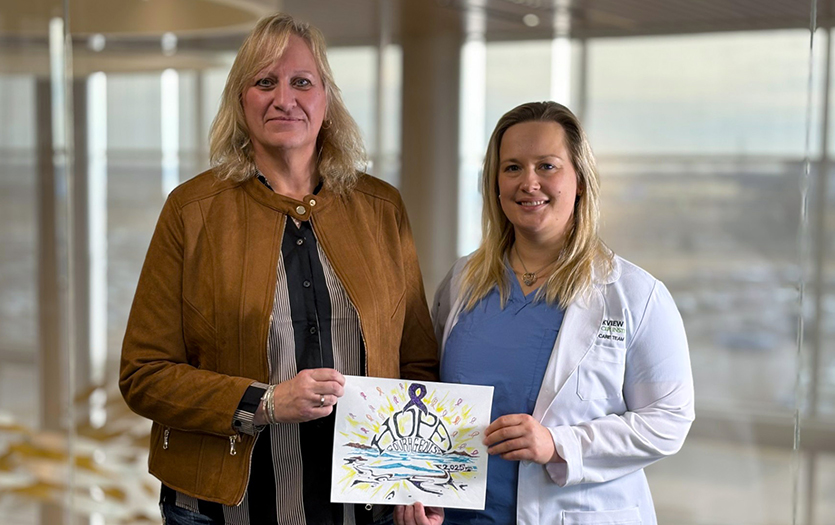
While ovarian cancer can be aggressive, medical advances bring hope for the future. Iwona Podzielinski, MD, gynecologic oncologist, Parkview Cancer Institute, speaks on the disease, addressing who’s most at risk and possible treatment options while sharing a bit of encouraging advice for those walking through a potential scare or diagnosis.
What is ovarian cancer?
Ovarian cancer is a rare condition that affects the ovaries, small almond-shaped glands located on either side of the uterus. In a normal state, ovarian cells are essential for hormone production and reproduction. However, in an abnormal state, these cells get converted into pre-cancer and cancerous cells. What differentiates them from normal cells is that they can grow uncontrollably and damage surrounding healthy tissues, which in some cases can be fatal.
Are their routine screenings for ovarian cancer?
Currently, there are no proven screenings for ovarian cancer. However, through diligent examinations, yearly gynecologic visits and diagnostic testing, there is a greater chance of discovering any issues. Additionally, women must pay close attention to their bodies. If something concerns you, please speak with your primary care provider, a nurse practitioner or gynecologist. If needed, seek medical attention from a gynecologic oncologist if you suspect cancer because early detection is vital.
How is ovarian cancer detected?
Because there aren’t any proven screenings, ovarian cancer can be challenging to diagnose. Early detection is crucial, but it can prove difficult because there are very few warning signs. With that said, the most common symptoms related to ovarian cancer can include:
- Bloating
- Feeling full quickly after eating
- Pain or swelling in the belly or pelvis
Unfortunately, these indications are often attributed to indigestion, GI discomfort or weight gain. Therefore, it’s essential for women to listen to their bodies and connect with their providers if something doesn’t feel right.
With that said, detecting ovarian cancer does require some sophisticated testing to identify any malignancy. However, when there is a suspicion, the first step is to utilize imaging technology like an ultrasound or CT scan, then occasionally blood testing. Ultimately, the best and most accurate test is diagnostic surgery.
Who’s most at risk for ovarian cancer?
Several risk factors can increase a women’s possibility of ovarian cancer. Some of the most common can include:
- Age: Most ovarian cancers get diagnosed in women over the age of 60.
- Genetics: Some ovarian cancers are caused by an inherited gene mutation like the BRCA1 and BRCA2.
- Family history: If you have blood relatives who have been diagnosed with ovarian cancer, you may be at an increased risk.
For individuals with any of these high-risk situations, we recommend very aggressive monitoring through high risk clinics, screening programs and a close medical follow-up.
What are the treatments for ovarian cancer?
With an ovarian cancer diagnosis, most patients will likely face surgery, followed by additional treatments, including chemotherapy and possibly clinical trials. However, every cancer is unique, and each person is different, so not everyone follows the same line of treatment or care plan. But that’s where we come in. At Parkview Cancer Institute, we will help you weigh the benefits and risks of each treatment option and find the one that’s right for you.
What advice would you give someone walking through a cancer scare or diagnosis?
Remember, it’s a marathon. We ask all patients and their family members to take a deep breath. In some situations, these scary moments and instances of suspicion turn out not to be cancer. However, if that’s not the case, and there is a problem, we will do everything we can to determine the best course of action for you. A cancer diagnosis can be overwhelming, but it’s important to have hope.



